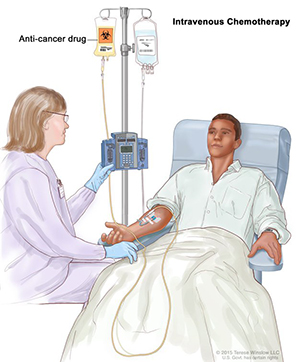Types of Chemotherapy Drugs
A host of different types of chemotherapy agents and anti-cancer drugs are used to treat cancer. These drugs destroy cancer cells differently, or prevent them from dividing, depending on their classification. Drugs in the same class destroy cancer cells by the same mechanism: they all attack the same target within the cell.
Depending on the type of cancer and the kind of drug used, chemotherapy drugs may be administered differently. They can be administered
- Orally (oral chemotherapy - PO)
- Intramuscular injection (injected into a muscle - IM)
- Subcutaneous injection (injected under the skin - SubQ)
- Intravenous chemotherapy (into a vein- IV)
- Intrathecal chemotherapy (injected into the fluid around the spine).
Two or more methods of administration may be used at the same time under certain circumstances. No matter what method is used, chemotherapy drugs are absorbed into the blood and carried around the body.

Intravenous injection is the most commonly used method of administrating chemotherapy. It is the most efficient way to get the medication into the bloodstream. The diagram to the right demonstrates nurse administering intravenous chemotherapy.
Oral chemotherapy is more convenient and does not require any specialized equipment.
In chemotherapy, cancer patients may be given one or more drugs from the available anti-cancer drugs. Since different chemical agents damage cancer cells in different ways and at different phases in the cell cycle, a combination of drugs is often employed to increase the cancerous cell-killing effectiveness in killing cancer cells. This is called combination chemotherapy.
The next section describes several major categories (classes) of chemotherapy agents based on their chemical structures and the way they act on cancer cells.
Updated: December 21, 2023
